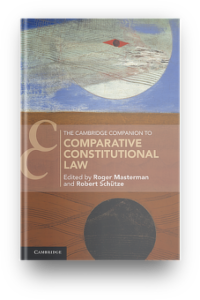Although the US Constitution is quite short, it is also quite old. The structures it called forth – including the presidency, the bicameral Congress, the Supreme Court – survive, even as their relationships have evolved. Its brief provisions have also spawned a complex body of jurisprudence on many issues that has shifted over more than two centuries; there are now more than 560 volumes of the offi cial ‘US Reports’, that is, of cases decided by the US Supreme Court.
In the first four decades after the Constitution came into effect, the Supreme Court, dominated by Chief Justice John Marshall, issued foundational opinions on issues of judicial review, the scope of federal power, and the supremacy of federal over state law . In the decades leading up to the Civil War of 1861– 1865, the Court struggled increasingly with a bitter sectional divide, reflected nowhere more starkly than in its infamous decision , Dred Scott v. Sandford , 2 treating African Americans as permanently incapable of being citizens, a decision overruled by the post- Civil War amendments. Following the Civil War and an all- too brief period of ‘Reconstruction’ when federal troops and officials sought to secure the rights of the newly freed former slaves in the South, from the 1870s until well into the twentieth century the Court and the country were faced with challenges arising out of the changing industrial conditions. Increased efforts by state and federal legislatures to respond to changing economic conditions clashed with commitments to a private sphere of liberty protecting the rights of freedom to contract. Not until the ‘New Deal’ of the 1930s did the caselaw take a decisive turn that, for most of the next eighty years, allowed the federal and state legislatures substantial latitude over economic regulation.
In the mid-twentieth century the Court began to invigorate an individual rights jurisprudence, in criminal procedure rights, religious and speech freedoms. The decision in Brown v. Board of Education , 3 reflecting the organized efforts of the movement for African American equality, initiated the ‘Civil Rights’ era in the Court and the nation: rights against racial segregation and racial discrimination were elaborated, as well as rights of privacy, gender equality, reproductive freedom, among others, especially by the Court led by Chief Justice Earl Warren Court and, in its early years, the Court led by Chief Justice Warren Burger. In the 1990s, under Chief Justice Rehnquist and in the twenty- fi rst century continuing under Chief Justice Roberts, a new set of issues emerged, in a jurisprudence that includes revived judicial interest in enforcing federalism- based limitations on national power. As some areas of rights for traditionally disadvantaged groups have expanded (e.g., rights to same- sex marriage), other jurisprudence has become increasingly concerned with protecting rights to use economic power (e.g., corporate speech) or money (e.g., in campaign contributions). 4
As this all- too brief introduction indicates, the range of topics developed in US constitutional caselaw is vast. Some important aspects of the US Constitution, moreover, are rarely if ever litigated but foundational to the structures of the national and state governments. This brief chapter, then, cannot be comprehensive. It will address selected topics, in an effort to provide some sense of the scope and history of important parts of this constitutional tradition.
What topics to address depends, in part, on whether one takes the perspective of an insider or outsider to the constitutional system. From an insider perspective, the theme of change in US constitutional law is at least as important as continuity. From an outsider perspective, some particularities of how US constitutional law deviates from that of many otherwise comparable constitutional democracies are worthy of comment. To illustrate these and other perspectives, this chapter will take up the Constitution as a written text; debates over its interpretation and the role of the courts; federalism, the supremacy of federal law and the scope of state and federal regulatory powers; selected rights, with a focus on the Fourteenth Amendment’s due process and equal protection clauses (considering the ‘incorporation’ of criminal procedure rights, racial and gender discrimination, and ‘substantive’ aspects of liberty protected by the due process clause); and US exceptionalism (discussing the death penalty, speech and guns). Only limited aspects of each of these topics can be discussed. Missing entirely are such other large topics such as the amending process; the constitutionally mandated decennial census; federal and state control of elections; the independent constitutional powers of the President; separation of powers among the branches of the federal government, including war powers, or limitations on the appointment power; the constitutional basis for and constraints on administrative regulation; the range of procedural due process, contract and property rights; treaties and international law; inter- state relations and agreements; and justiciability limitations on the judicial power. It is hoped that what is covered will provide a useful introduction.
- Opinions: Bound Volumes , Supreme Court of the US, www.supremecourt.gov/ opinions/ boundvolumes.aspx (last visited 1 November 2018) (noting 569 offi cial volumes).
- 60 US 393 (1857).
- 347 US 483 (1954).
- Cf. P.S. Karlan , ‘Foreword: Democracy and Disdain ’ ( 2012 ) 126 Harv. L. Rev . 1, 29 – 32 (describing Citizens’ United as prioritizing the Court’s conception of liberty as against the legislature’s conception of equality).
